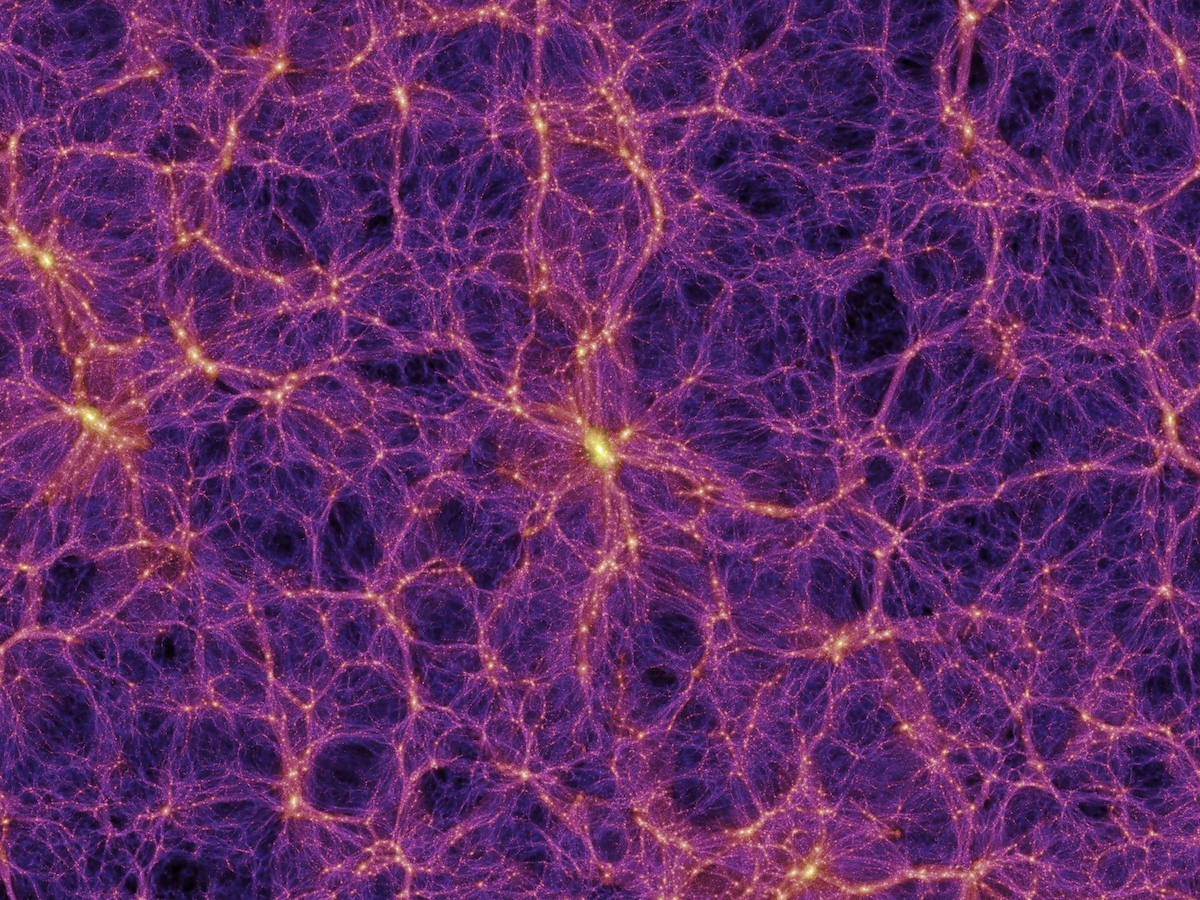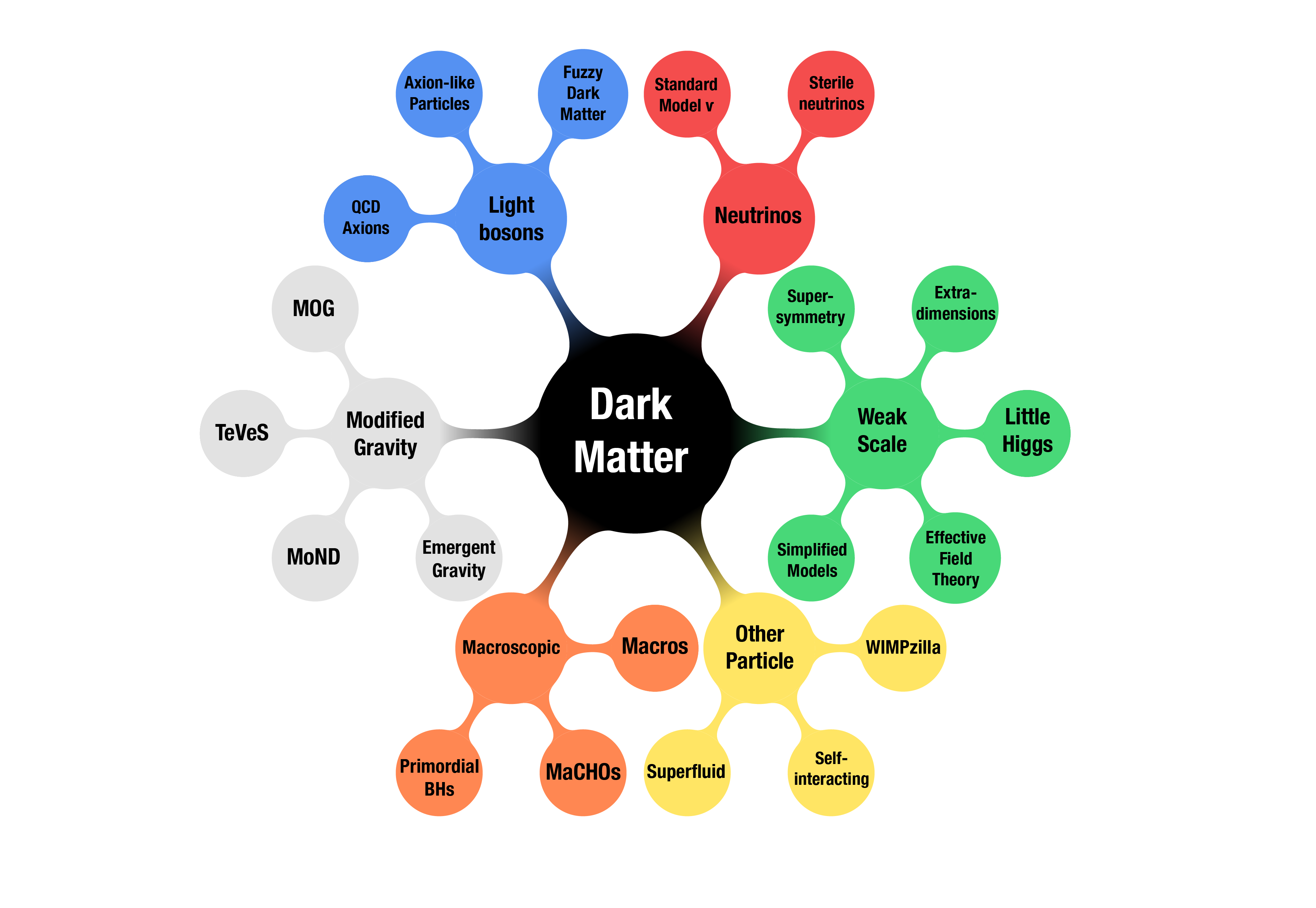Breaking new ground in the search for dark matter
By: Ana Lopes
7 AUGUST, 2020 · Voir en français
Our fourth story in the LHC Physics at Ten series discusses the LHC’s hunt for the hypothetical particle that may make up dark matter
The Large Hadron Collider (LHC) is renowned for the hunt for and discovery of the Higgs boson, but in the 10 years since the machine collided protons at an energy higher than previously achieved at a particle accelerator, researchers have been using it to try to hunt down an equally exciting particle: the hypothetical particle that may make up an invisible form of matter called dark matter, which is five times more prevalent than ordinary matter and without which there would be no universe as we know it. The LHC dark-matter searches have so far come up empty handed, as have non-collider searches, but the incredible work and skill put by the LHC researchers into finding it has led them to narrow down many of the regions where the particle may lie hidden – necessary milestones on the path to a discovery.
“Before the LHC, the space of possibilities for dark matter was much wider than it is today,” says dark-matter theorist Tim Tait of UC Irvine and theory co-convener of the LHC Dark Matter Working Group.
“The LHC has really broken new ground in the search for dark matter in the form of weakly interacting massive particles, by covering a wide array of potential signals predicted by either production of dark matter, or production of the particles mediating its interactions with ordinary matter. All of the observed results have been consistent with models that don’t include dark matter, and give us important information as to what kinds of particles can no longer explain it. The results have both pointed experimentalists in new directions for how to search for dark matter, and prompted theorists to rethink existing ideas for what dark matter could be – and in some cases to come up with new ones.”

Make it, break it and shake it
To look for dark matter, experiments essentially “make it, break it or shake it”. The LHC has been trying to make it by colliding beams of protons. Some experiments are using telescopes in space and on the ground to look for indirect signals of dark-matter particles as they collide and break themselves out in space. Others still are chasing these elusive particles directly by searching for the kicks, or “shakes”, they give to atomic nuclei in underground detectors.
The make-it approach is complementary to the break-it and shake-it experiments, and if the LHC detects a potential dark-matter particle, it will require confirmation from the other experiments to prove that it is indeed a dark-matter particle. By contrast, if the direct and indirect experiments detect a signal from a dark-matter particle interaction, experiments at the LHC could be designed to study the details of such an interaction.
Missing-momentum signal and bump hunting

So how has the LHC been looking for signs of dark-matter production in proton collisions? The main signature of the presence of a dark-matter particle in such collisions is the so-called missing transverse momentum. To look for this signature, researchers add up the momenta of the particles that the LHC detectors can see – more precisely the momenta at right angles to the colliding beams of protons – and identify any missing momentum needed to reach the total momentum before the collision. The total momentum should be zero because the protons travel along the direction of the beams before they collide. But if the total momentum after the collision is not zero, the missing momentum needed to make it zero could have been carried away by an undetected dark-matter particle.
Missing momentum is the basis for two main types of search at the LHC. One type is guided by so-called complete new physics models, such as supersymmetry (SUSY) models. In SUSY models, the known particles described by the Standard Model of particle physics have a supersymmetric partner particle with a quantum property called spin that differs from that of its counterpart by half of a unit. In addition, in many SUSY models, the lightest supersymmetric particle is a weakly interacting massive particle (WIMP). WIMPs are one of the most captivating candidates for a dark-matter particle because they could generate the current abundance of dark matter in the cosmos. Searches targeting SUSY WIMPs look for missing momentum from a pair of dark-matter particles plus a spray, or “jet”, of particles and/or particles called leptons.
Another type of search involving the missing-momentum signature is guided by simplified models that include a WIMP-like dark-matter particle and a mediator particle that would interact with the known ordinary particles. The mediator can be either a known particle, such as the Z boson or the Higgs boson, or an unknown particle. These models have gained significant traction in recent years because they are very simple yet general in nature (complete models are specific and thus narrower in scope) and they can be used as benchmarks for comparisons between results from the LHC and from non-collider dark-matter experiments. In addition to missing momentum from a pair of dark-matter particles, this second type of search looks for at least one highly energetic object such as a jet of particles or a photon.
In the context of simplified models, there’s an alternative to missing-momentum searches, which is to look not for the dark-matter particle but for the mediator particle through its transformation, or “decay”, into ordinary particles. This approach looks for a bump over a smooth background of events in the collision data, such as a bump in the mass distribution of events with two jets or two leptons.
Narrowing down the WIMP territory
What results have the LHC experiments achieved from these WIMP searches? The short answer is that they haven’t yet found signs of WIMP dark matter. The longer answer is that they have ruled out large chunks of the theoretical WIMP territory and put strong limits on the allowed values of the properties of both the dark-matter particle and the mediator particle, such as their masses and interaction strengths with other particles. Summarising the results from the LHC experiments, ATLAS experiment collaboration member Caterina Doglioni says “We have completed a large number of dedicated searches for invisible particles and visible particles that would occur in processes involving dark matter, and we have interpreted the results of these searches in terms of many different WIMP dark-matter scenarios, from simplified models to SUSY models. This work benefitted from the collaboration between experimentalists and theorists, for example on discussion platforms such as the LHC Dark Matter Working Group, which includes theorists and representatives from the ATLAS, CMS and LHCb collaborations. Placing the LHC results in the context of the global WIMP search that includes direct- and indirect-detection experiments has also been a focus of discussion in the dark-matter community, and the discussion continues to date on how to best exploit synergies between different experiments that have the same scientific goal of finding dark matter.”
Giving a specific example of a result obtained with data from the ATLAS experiment, Priscilla Pani, ATLAS experiment co-convener of the LHC Dark Matter Working Group, highlights how the collaboration has recently searched the full LHC dataset from the machine’s second run (Run 2), collected between 2015 and 2018, to look for instances in which the Higgs boson might decay into dark-matter particles. “We found no instances of this decay but we were able to set the strongest limits to date on the likelihood that it occurs,” says Pani.
Phil Harris, CMS experiment co-convener of the LHC Dark Matter Working Group, highlights searches for a dark-matter mediator decaying into two jets, such as a recent CMS search based on Run 2 data.
“These so-called dijet searches are very powerful because they can probe a large range of mediator masses and interaction strengths,” says Harris.
Xabier Cid Vidal, LHCb experiment co-convener of the LHC Dark Matter Working Group, in turn notes how data from Run 1 and Run 2 on the decay of a particle known as the Bs meson has allowed the LHCb collaboration to place strong limits on SUSY models that include WIMPs. “The decay of the Bs meson into two muons is very sensitive to SUSY particles, such as SUSY WIMPs, because the frequency with which the decay occurs can be very different from that predicted by the Standard Model if SUSY particles, even if their masses are too high to be directly detected at the LHC, interfere with the decay,” says Cid Vidal.
Casting a wider net
“10 years ago, experiments (at the LHC and beyond) were searching for dark-matter particles with masses above the proton mass (1 GeV) and below a few TeV. That is, they were targeting classical WIMPs such as those predicted by SUSY. Fast forward 10 years and dark-matter experiments are now searching for WIMP-like particles with masses as low as around 1 MeV and as high as 100 TeV,” says Tait. “And the null results from searches, such as at the LHC, have inspired many other possible explanations for the nature of dark matter, from fuzzy dark matter made of particles with masses as low as 10−22 eV to primordial black holes with masses equivalent to several suns. In light of this, the dark-matter community has begun to cast a wider net to explore a larger landscape of possibilities.”

On the collider front, the LHC researchers have begun to investigate some of these new possibilities. For example, they have started looking at the hypothesis that dark matter is part of a larger dark sector with several new types of dark particles. These dark-sector particles could include a dark-matter equivalent of the photon, the dark photon, which would interact with the other dark-sector particles as well as the known particles, and long-lived particles, which are also predicted by SUSY models.
“Dark-sector scenarios provide a new set of experimental signatures, and this is a new playground for LHC physicists,” says Doglioni.
“We are now expanding upon the experimental methods that we are familiar with, so we can try to catch rare and unusual signals buried in large backgrounds. Moreover, many other current and planned experiments are also targeting dark sectors and particles interacting more feebly than WIMPs. Some of these experiments, such as the newly approved FASER experiment, are sharing knowledge, technology and even accelerator complex with the main LHC experiments, and they will complement the reach of LHC searches for non-WIMP dark matter, as shown by the CERN Physics Beyond Colliders initiative.”
Finally, the LHC researchers are still working on data from Run 2, and the data gathered so far, from Run 1 and Run 2, is only about 5% of the total that the experiments will record. Given this, as well as the immense knowledge gained from the many LHC analyses thus far conducted, there’s perhaps a fighting chance that the LHC will discover a dark-matter particle in the next 10 years. “It’s the fact we haven’t found it yet and the possibility that we may find it in the not-so-distant future that keeps me excited about my job,” says Harris. “The last 10 years have shown us that dark matter might be different from what we had initially thought, but that doesn’t mean it is not there for us to find,” says Cid Vidal.
“We will leave no stone unturned, no matter how big or small and how long it will take us,” says Pani.
Further reading:
A new era in the search for dark matter
Searching for Dark Matter with the ATLAS detector
Hero header image: NASA, ESA, H.Teplitz and M.Rafelski (IPAC/Caltech), A. Koekemoer (STScI), R. Windhorst (ASU), Z. Levay (STScI)
Don't miss the next articles of our series, which will cover the Standard Model, the early universe and more.
